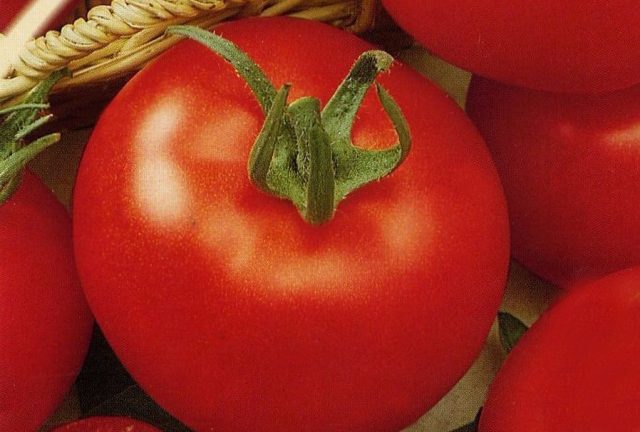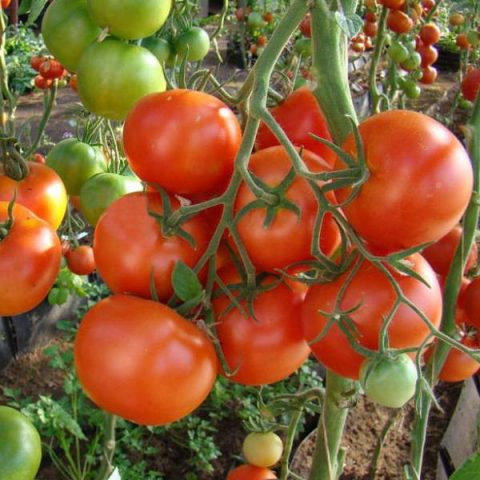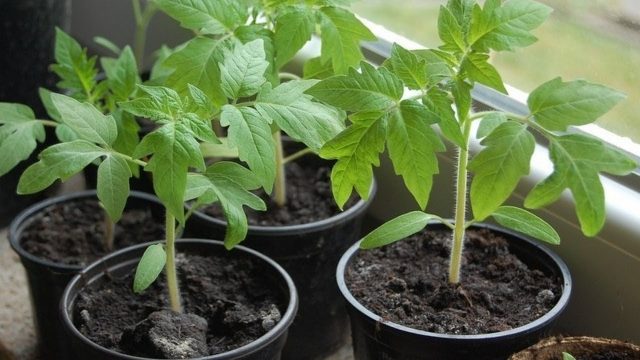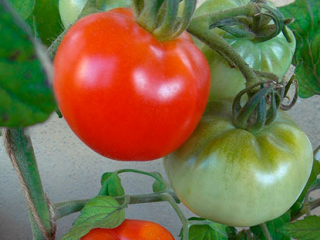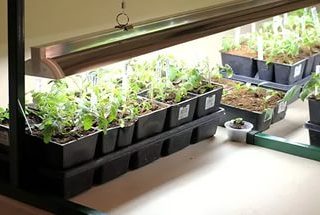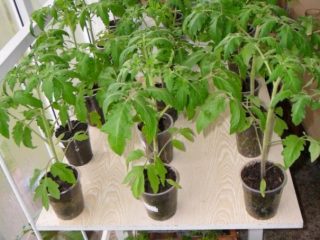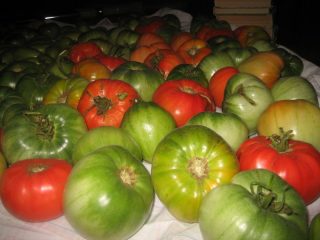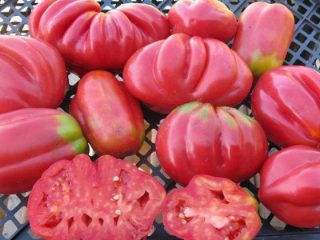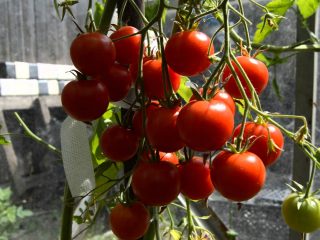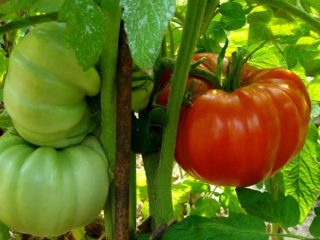Content
The Alaska tomato is an early-ripening variety of Russian selection. Included in the State Register of Breeding Achievements in 2002. Approved for cultivation in all regions on personal garden plots and in small farms. The Alaska tomato variety is also suitable for growing in container culture.
Characteristics and description of the Alaska tomato variety
The Alaska tomato variety is of a determinate type, which means the formation of a short plant with independent growth limitation at a height of 60-70 cm. The leaf grows of medium size, light green in color. The inflorescence forms a simple one. The first is laid over 8-9 sheets, the next - after 1-2 sheets. The characteristics and reviews of the Alaska tomato variety describe that its bush has an attractive appearance.
The variety is early ripening, the fruits are filled 3 months after germination. Tomato variety Alaska has excellent seed germination. Ovaries form under any conditions, including sudden temperature changes or high humidity.
The tomato is intended for growing in open ground, under film covers.The Alaska tomato variety can also be harvested on balconies or window sills at home.
Description of fruits
Alaska tomatoes have a flat-round shape with a smooth surface. Tomatoes grow uniform in size, with a simultaneous ripening period. The color of unripe tomatoes is green, and that of ripe tomatoes is red. The number of nests is 3-4 pcs. The average weight of the fruit is about 90 g. The taste is good. The purpose of the fruit is salad.
Productivity
Productivity in open ground is 9-11 kg per 1 sq. m. Reviews and photos of Alaska tomatoes show that under favorable growing conditions in a greenhouse, one plant produces about 2 kg of fruit. Productivity is affected by timely planting, compliance with light and thermal conditions, soil fertility and moderate watering.
Sustainability
Early ripening of fruits allows the plant to produce them before the mass destruction of the crop by late blight.
The characteristics of the Alaska tomato also state resistance to:
- fusarium wilt;
- cladosporiosis;
- tobacco mosaic virus.
The Alaska tomato variety is tolerant to unfavorable growing conditions. But when grown in open ground and the air temperature drops below +10°C, it requires double covering with agrofibre or film.
Advantages and disadvantages
The advantage of Alaska tomatoes is their high yield, despite the low growth of the plant. The variety is unpretentious in care; the plant sets fruit in any conditions, which allows you to grow the crop even at home.
The disadvantages of the variety include the fact that its fruits are used only for fresh consumption. They are not suitable for preservation and long-term storage.
Rules for planting and care
Depending on the region and conditions for growing Alaska tomatoes, sowing seedlings begins in mid-March - early April. It will take 60-65 days to grow seedlings.
According to reviews and photos of Alaska tomatoes, in warm regions it can be planted by direct sowing on heated ridges with temporary shelters, namely after night air temperatures are above +10°C.
Growing seedlings
Growing Alaska tomato variety through seedlings will allow you to get a harvest in the first ten days of June. In order for plants to spend less time adapting when replanting, it is recommended to plant seeds in peat tablets. This planting material contains all the substances the plant needs for the first stage of growth.
Preparing seeds for planting:
- Calibration. Seeds are selected by size, and small and damaged specimens are eliminated. Seeds of the same size will germinate together and not shade each other.
- Disinfection. In order to reduce the influence of pathogenic microflora that may be on the surface of the seeds, they are soaked in various disinfectants, for example, fungicides or hydrogen peroxide. To treat with hydrogen peroxide, seeds are poured with undiluted preparation for 10 minutes, after which they are washed with water.
- Soaking in growth stimulants. An optional procedure, but it allows you to increase the energy of the seeds, as well as their immunity.
- Germination. In order to accelerate the growth of seedlings on the soil, as well as to accurately determine the number of viable seeds, they are germinated for several days in a damp cloth in a warm place. When white sprouts appear, the seeds are ready for planting.
For planting in common containers, prepare the soil by combining 2 parts of soil and 1 part of vermicompost.To loosen the soil, add coconut substrate or vermiculite. To enrich the soil, several weeks before use it is spilled with biological products containing beneficial bacteria. After preparation, the soil mixture is thoroughly mixed. Planting containers are disinfected with hot water or disinfectants. The soil is watered before sowing.
For planting, the seeds are buried no more than 1 cm. Subsequently, the crops are sprayed with a sprayer so that the seeds are not buried in the soil. Before germination, the crops are given mini-greenhouse conditions. To do this, they are covered and placed in a warm place. But as soon as the seedling loops appear, the temperature is reduced to +18°C, and the containers are placed in a bright place. This method allows you to begin the process of root formation and prevents the plants from stretching.
To grow early variety seedlings you need:
- Lighting 14-16 hours. On cloudy days, additional lighting is necessary throughout the day.
- Temperature. Tomatoes are grown at a temperature of +20°С… +22°С. Lay bedding material on cold window sills.
- Moderate watering. Excessive watering leads to rotting of the roots and poor absorption of nutrients by the plant. Therefore, each subsequent watering is carried out after the top layer of soil has dried, and even when the foliage has slightly drooped. In one watering, the soil layer is completely moistened.
- Space. Plants should be positioned so that their leaves do not touch each other. When crowded, growth energy decreases.
Picking - transplanting young plants into spacious containers is carried out when the first true leaf appears.
When growing Alaska tomato seedlings in peat tablets, replanting begins after the roots have sprouted from the bottom hole.
Before transferring seedlings to open ground, they are hardened with a gradual decrease in temperature.
Transplanting seedlings
Seedlings are transferred to open ground in May - early June. Tomatoes are planted in ridges at a distance of 40 cm. The required length is measured from stem to stem. For replanting, the soil is loosened. The holes are made slightly larger than the size of the earthen ball in which the plant was grown. A glass of ash and humus is added to the hole, as well as complex fertilizer, if this has not been done in advance.
Before replanting, water-replenishing watering of the soil is done; water is poured into the hole until it stops being absorbed. The tomato bush is planted in earthen pulp with its roots, and covered with a dry layer of soil on top, up to the cotyledons, without hilling. After such planting, watering is not carried out for 2 weeks.
Tomato care
Further care for the Alaska tomato consists of regular watering, which is more required for plants grown in containers. Water the tomatoes with warm water without touching the green mass. From the description and photo of Alaska tomatoes, it is clear that the plants do not require pinching or staking.
Fertilizing with complete complex fertilizer is applied if necessary, several times during the growing season.
Conclusion
The Alaska tomato is suitable for early harvest. The compact bush sets fruit perfectly and yields its harvest in unison.Simple care that does not require the formation of a bush, suitable for growing by novice gardeners. In addition, a beautiful Alaska tomato bush can be grown on an apartment window.
